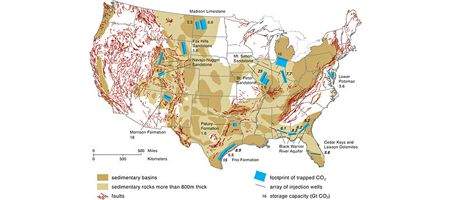While plenty of question marks still hang over the prospect of carbon capture and storage, MIT believes it’s ruled out one: the US, it says, has enough capacity in its deep saline aquifers to store at least a century’s fossil fuel emissions.

In the past, estimates of the US’ capacity have ranged from enough to store just a few years’ worth of coal-plant emissions up to many thousands of years’ worth.
It’s a big disparity. But because deep saline aquifers have no commercial value, there’s been little exploration to determine their extent.
In addition, says MIT, the fluid dynamics of how concentrated, liquefied carbon dioxide would spread through such formations is very complicated. Most analyses have simply estimated the overall volume of the formations, without considering the dynamics of how the CO2 would infiltrate them.
This is what the MIT team set out to do, modeling how the carbon dioxide would percolate through the rock, accounting not only for the ultimate capacity of the formations but the rate of injection that could be sustained over time.
“The key is capturing the essential physics of the problem,but simplifying it enough so it could be applied to the entire country,” says student Michael Szulczewski.
“That meant looking at the details of trapping mechanisms in the porous rock at a scale of microns, then applying that understanding to formations that span hundreds of miles.”
The study didn’t examine the cost of CCS systems – and many analysts have concluded that they could add 15 to 30 percent to the cost of coal-generated electricity. In other words, they’d only be viable if a carbon tax or a limit on carbon emissions were put in place. Nor did the team look at safety issues.
Nevertheless, says professor Ruben Juanes, “I really think CCS has a role to play. It’s not an ultimate salvation, it’s a bridge, but it may be essential because it can really address the emissions from coal and natural gas.”






